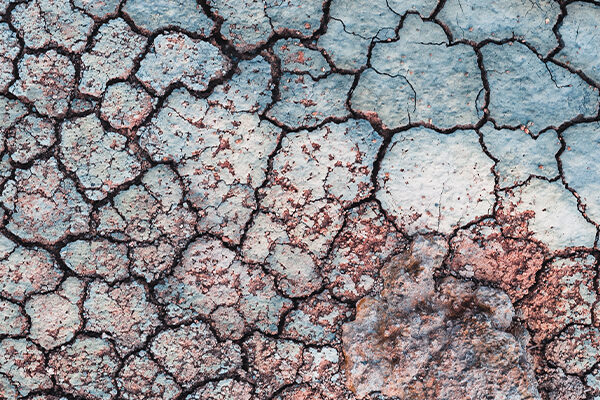Updated on May 30, 2025

As we observe Skin Cancer Awareness Month 2025, now is the time to commit not only to protecting our skin through smart habits like sunscreen use and early detection but also to supporting vital research that offers hope for a future where skin cancer is less common and more treatable.
Understanding the Prevalence of Skin Cancer
With millions of cases identified annually, skin cancer is the most prevalent type of cancer worldwide. In the United States alone, over 3.5 million cases are reported annually, making it the most prevalent cancer in the country. Alarmingly,1 in 5 Americans will develop skin cancer by the age of 70 .
These statistics highlight the critical need for National Skin Cancer Awareness Month, a time devoted to informing the public about skin cancer risks, promoting effective prevention measures, and encouraging early detection practices.
Understanding Skin Cancer: The Basics Before Prevention
Before diving into how to prevent skin cancer, it’s essential to understand what it actually is. Skin cancer occurs when abnormal skin cells grow uncontrollably, often triggered by damage from ultraviolet (UV) radiation either from the sun or artificial sources like tanning beds. It’s not a one-size-fits-all condition; skin cancer includes several types, with the most common being:
- Basal Cell Carcinoma (BCC): BCC is the most frequent and slowest-growing form, often appearing as a pearly bump or flesh-colored patch.
- Squamous Cell Carcinoma (SCC): SCC typically appears as a red, scaly patch or sore and is more likely to spread if untreated.
- Melanoma: Melanoma is the most dangerous type, known for its tendency to spread quickly. It can develop from existing moles or appear as a new dark spot on the skin.
Prevention: Your First Line of Defense
Prevention starts with small, consistent habits. Protecting your skin doesn’t require drastic lifestyle changes, it’s about being mindful in your daily routine. Here’s how you can start:
-
Apply Sunscreen Daily:
Choose a broad-spectrum sunscreen with an SPF of 30 or higher. Apply it generously to all exposed skin, even on cloudy days. Reapply every two hours or sooner if swimming or sweating.
-
Seek Shade:
UV rays are strongest between 10 a.m. and 4 p.m. Whenever possible, stay in shaded areas or use umbrellas and wide-brimmed hats to minimize direct sun exposure.
-
Wear Protective Clothing:
Cover up with long-sleeved shirts, long pants, and sunglasses with UV protection. UPF-rated clothing offers additional defense against UV radiation.
-
Avoid Tanning Beds:
Indoor tanning is a major risk factor for all types of skin cancer. In fact, using a tanning bed before the age of 35 increases your risk of melanoma by 75%.
Incorporating these preventative measures into your lifestyle can dramatically reduce your skin cancer risk and gives you confidence to stand out in crowd.
Early Detection: Recognizing the Signs
Even with the best prevention efforts, early detection remains critical. When caught early, skin cancer is highly treatable. That’s why regular self-checks and professional screenings are essential.
Be on the lookout for:
- New Growths or Sores: Any new spots or lesions that don’t heal after a few weeks should be evaluated.
- Changes in Existing Moles: Watch for alterations in color, size, or shape.
Use the ABCDEs of Melanoma to guide your self-exams:

- A – Asymmetry: One half of the mole doesn’t match the other.
- B – Border: Edges are irregular, blurred, or jagged.
- C – Color: Varies in different areas (shades of tan, brown, black, sometimes white, red, or blue).
- D – Diameter: Larger than 6mm (roughly the size of a pencil eraser).
- E – Evolving: The mole is changing in appearance over time.
If you notice any of these signs, don’t wait to consult a dermatologist. Early detection can significantly increase the chances of successful treatment.
Advocacy: Spreading Awareness and Supporting Research
Advocacy is a powerful tool in the fight against skin cancer. While prevention and early detection start with individual action, Skin Cancer Awareness Month reminds us of the greater impact we can make together. It’s a time to inform, inspire, and ignite change at every level.
During Skin Cancer Awareness Month 2025, your voice truly matters. Whether you’re sharing resources, supporting research, or simply leading by example, every step contributes to a healthier future.
-
Educate and Engage:
Talk to your family, friends, and community about the dangers of UV exposure and the importance of early detection. By spreading awareness throughout skin cancer awareness month, you help others recognize the power of prevention.
-
Support Research Initiatives:
Participating in dermatology clinical trials which promote innovative therapies also are advancing new treatments and deepening our understanding of skin diseases. These efforts are key to transforming how skin cancer is managed and treated.
-
Get Involved in Events:
Participate in local or virtual activities organized during National Skin Cancer Awareness Month from educational seminars to skin screening clinics. These events amplify outreach and encourage community-wide engagement.
-
Lead by Example:
Practicing good sun habits like wearing sunscreen and avoiding tanning beds can influence others to do the same. Your behavior, especially during Skin Cancer Awareness Month, sets a tone for those around you.
Ultimately, skin cancer awareness month is more than a campaign, it’s a call to act on the cause. Let’s use this time to advocate, educate, and support efforts that bring us closer to a future with fewer cases, earlier diagnoses, and more lives saved.
Advancing Dermatology Through Clinical Trials
At the forefront of dermatological research, there are organizations which are committed to improving skin health through innovative clinical trials. Their studies focus on various skin conditions, aiming to develop effective treatments and preventive measures. By participating in these trials, individuals contribute to groundbreaking research that can lead to significant advancements in dermatology.
Conclusion: Protect, Detect, Support
As we mark Skin Cancer Awareness Month 2025, it becomes clear that prevention, early detection, and ongoing research are key to turning the tide against this common yet preventable disease. Simple actions like wearing sunscreen, avoiding tanning beds, seeking shade, and paying attention to changes in your skin can significantly reduce your risk.
But protecting your skin is only part of the story. There are dedicated organizations which are leading the way in dermatology-focused clinical trials, real progress is being made in the development of more effective treatments and long-term solutions. Their groundbreaking work gives us reason to hope for a future where skin cancer is not only more treatable but increasingly avoidable.
Let this month be your reminder protect your skin, check it regularly, and support the science that’s paving the way forward. Together, we can turn awareness into action and action into impact.





